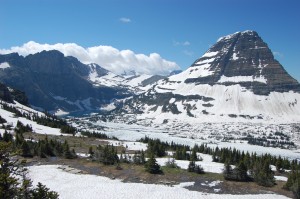Is Climate Change Affecting When People Visit National Parks?

Last year, 281.3 million people visited America’s national parks, down 4.2 million from a year earlier. With parks such as Glacier (above) likely to be glacier-less sometime around 2030, or sooner, authors Lauren B. Buckley and Madison S. Foushee (PDF here) track differences in attendance habits since 1979 to ask if climate change is affecting relatively mundane human activities such as park visitation:
Climate change has driven many organisms to shift their seasonal timing. Are humans also shifting their weather-related behaviors such as outdoor recreation? Here we show that peak attendance in U.S. national parks experiencing climate change has shifted 4 days earlier since 1979. Of the nine parks experiencing significant increases in mean spring temperatures, seven also exhibit shifts in the timing of peak attendance. Of the 18 parks without significant temperature changes, only 3 exhibit attendance shifts. Our analysis suggests that humans are among the organisms shifting behavior in response to climate change.
The authors are careful not to draw too much causal significance from a 4-day shift, but also place their study of humans in the context as the changing behavior of other animals:
The correlative nature of our evidence prevents attributing causation. Yet, our evidence complements that rapidly accumulating for other organisms showing behavioral shifts in the direction expected in response to climate change (Parmesan 2006).

Comments